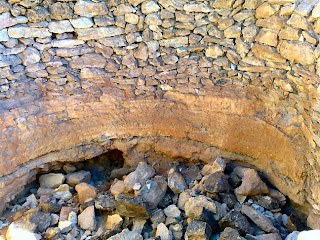































Daily report from the Great Arab Revolt Project team dig in Jordan in November 2008.

After two weeks in the desert, the team was withdrawn from the line for well deserved leave, taken in Aqaba and Wadi Rum.








It was appropriate that today was chosen by the BBC to film the dig for a new documentary on Lawrence of Arabia and his legacy – this being our last day on site and a time for summing up. The BBC were interested in how Lawrence is viewed in Jordan today and in the motivation of a team of British archaeologists investigating Lawrence’s war in the Middle East – not least in the context of contemporary conflict between Western powers and guerrilla resistance in Afghanistan and Iraq.
What then have we learned about the Great Arab Revolt in the last two weeks? Our researchers have seen dozens of new Ottoman military sites and hundreds of new Ottoman army tent rings, making the scale of the militarisation of the landscape even more spectacular than that seen in previous years.



Another intrepid group began a reconnaissance of the Hizaz railway south from Ma’an to Batn Al Ghul. This was aimed at identifying Great Arab Revolt period structures and features, (redoubts, trenches, breastworks and similar). The only way to detect these sites is to drive in the desert adjacent to the railway and to observe the landscape first hand. By the end of today we had discovered 5 new sites, all of which featured tent rings, defensive trenches, possible machine gun posts, and other characteristics all of which were worthy of serious investigation. Included in these sites we found the location of Gadia Al Hajj station which we had previously not been unable to find.
The intensity of this field work meant that after six hours we had only been able to cover 20km, leaving a further 40km on this stretch – who knows wonders what these may reveal!
For those interested in the use of metal detectors on this expedition, here’s a couple of pictures hastily taken of some of the 600 metal artefacts found during the first 7 days of our searching. The range and age of these reflect the ancient location of the WW1 sites and the pathways along which they lie alongside.
Finally we would like to express our sincere thanks to the Edom Hotel near to the astonishing new wonder of the world that is Petra for their kindness in allowing us to have internet access via the hotel in order to make and publish this blog. We are very grateful for their help.
